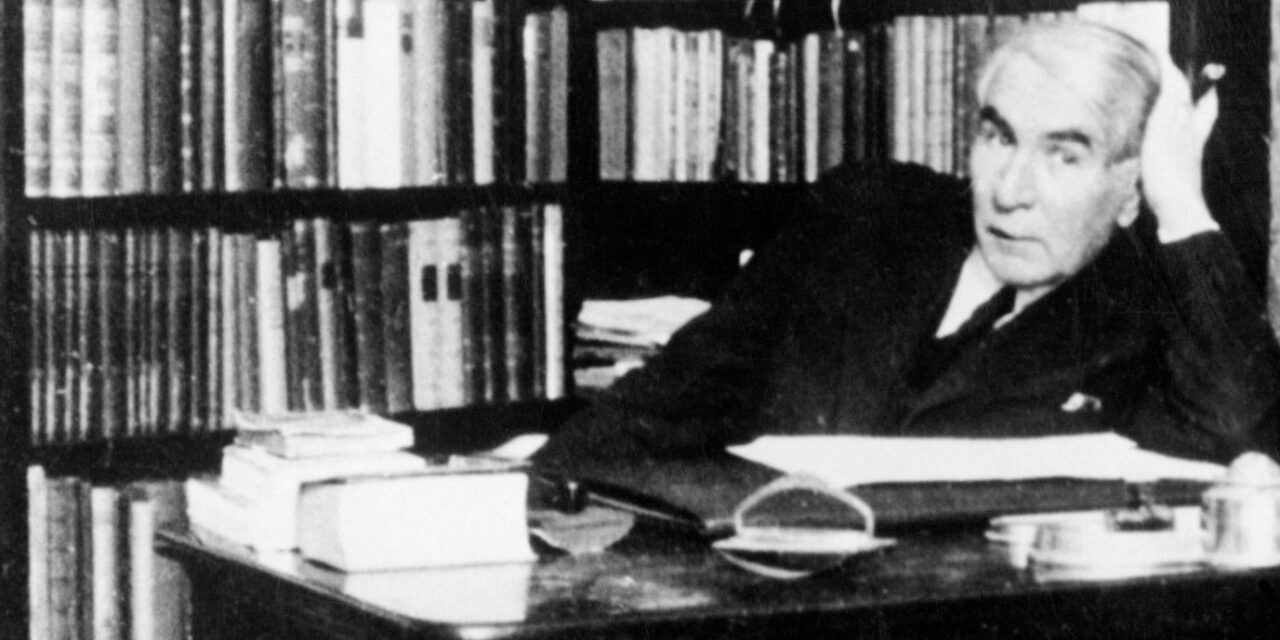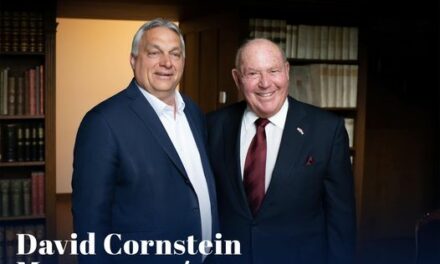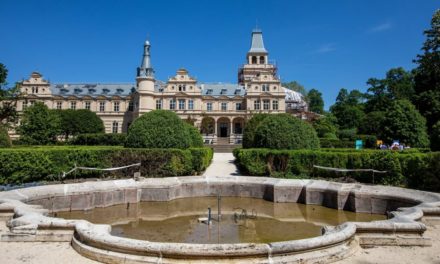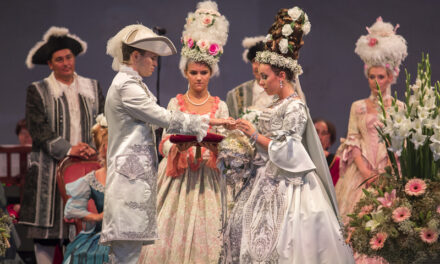"I'm just a do-it-yourself little master of literature. I'm not a high-register organist, I'm a pigeon above the Hungarian fields, but tired people like to hear that too sometimes". Ninety years ago, on February 8, 1934, Ferenc Móra, writer, journalist, library and museum director, author of Kincskereső kisködmön and Aranykoporsó, died.
The later storyteller was born in Kiskunfélegyháza on July 19, 1879. His father was a poor winemaker with constant financial problems, and his mother was a baker.
Despite the great poverty, the parents did their best to make their sons, Ferenc and his brother, István, educated people.
István later became known as a poet.
Ferenc Móra studied at the high school in Kiskunfélegyház, and already at the age of 16 his poem was published in the Félegyházi Hírlap. He majored in geography and natural history at the University of Pest, but dropped out of his studies after three years. He taught for a short time in Felsőlövő, then in 1902 he became a journalist for the Szegedi Napló. He was a town hall correspondent, then wrote for the paper's series of covers, glosses and sketches under the signature of Csipke called Maárl hollánra, and was soon listed as the paper's leading publicist alongside the writer István Tömörkeny. In 1904, he became an employee of the Somogyi Library and City Museum under the administration of Tömörkeny,
this is when his friendship with Lajos Pósa, the "fairytale king", began, who discovered in him the excellent children's writer.
Between 1905 and 1923, Az Ún Újságom was a collaborator writing under several pseudonyms, and it was then that his most popular pieces of his work were written: Rab ember fiai, Csalavár Csalavári Csilicsali, királyfi Dióbél and Kincskereső kisködmön, which were later adapted on TV and radio.
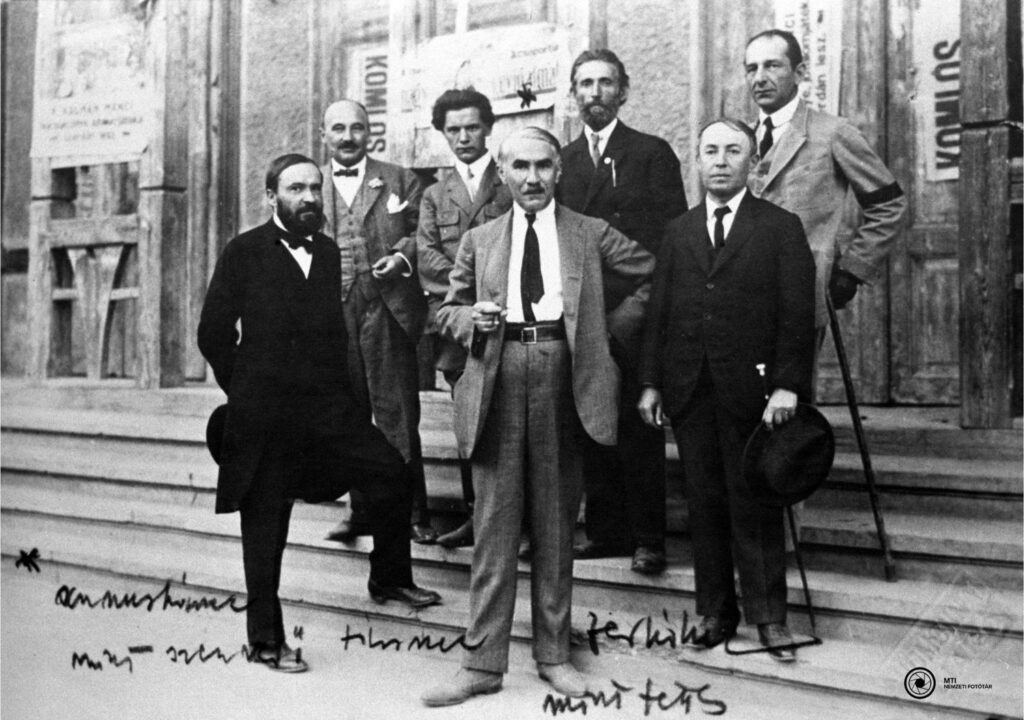
Gyula Juhász, Ferenc Móra, Ödön Réti (front row, bj), and János Espersit, Attila József, Lajos Károlyi and Endre Vertán (back row, bj) on the steps of the Hollósy Kornélia Theater in Makó in 1924 (from a photo by Nándor Homonnai in 1983 reproduction.) (Photo: National Photo Gallery)
Móra became the editor-in-chief of the Szegedi Napló in 1913, and gained a national reputation as a poet, youth writer and political journalist.
His political stance was bourgeois radicalism, which the authorities did not take kindly to, for his writings a libel suit was brought against him.
which was interrupted by the outbreak of the First World War.
He was elected a member of the Petőfi Society in 1915, and two years later he became the director of the Somogyi Library and City Museum. Towards the end of the war, he was one of the organizers of the civil democratic transformation in Szeged. His editorial entitled Memento, published on April 1, 1919, was interpreted by his enemies as a call to massacre, and because of this, he was forced to resign as editor-in-chief of Napló. He retired from public life for a short time and compiled a collection of his poems under the title Book of Books.
He appeared in the columns of A Világ from 1922 with his readers' portfolios and editorials. After the paper ceased to exist, Magyar Hírlap published his writings, travelogues, and colorful, almost novelistic reports about his excavations.
In addition to poetry and journalism, from the beginning of the 1920s, he also matured in the genre of the novel. The idea for his first novel came from the murder of his friend, the well-known visual artist Ödön Heller, from which in 1922 the Death of the Painter was born, which was eventually titled Four Fathers' One Daughter.
In 1924, he wrote his bitter satire on the first years of the Horthy era, The Resurrection of Hannibal, which was only published in 1949, 15 years after his death.
Zoltán Fábri's 1956 film, Teacher Hannibal, was made from this.
A film directed by István Szőts was also made from the 1927 novel Enék a búzamezőrő.
The writer was awarded an honorary doctorate in Szeged in 1932, and on this illustrious occasion he handed over the first copy of the historical novel The Golden Casket to the university. He could also call himself a lucky researcher: between 1907 and 1914, he excavated a European-famous Stone Age settlement at Csókán in Torontál County, and enriched domestic archeology with valuable finds from almost every age in the vicinity of Szeged.
Móra, who had a weak body, began to get sick from 1930, he was diagnosed with pancreatic cancer in 1933, and was soon operated on in Pest, but he could not be helped anymore.
He returned home to Szeged and began writing a series of articles - the story of his death.
Ferenc Móra died on February 8, 1934.
One of the most important virtues of his writing art is his language, the clear-sounding Hungarian language that impresses with the immediacy of live speech. "I'm just a do-it-yourself little master of literature. I'm not a high-register organist, I'm a dove above the Hungarian fields, but tired people like to hear that too sometimes," he modestly wrote about himself.
MTI / hirado.hu
Featured image: Writer Ferenc Móra in his home in Szeged, in the early 1930s (Photo: MTI reproduction)

